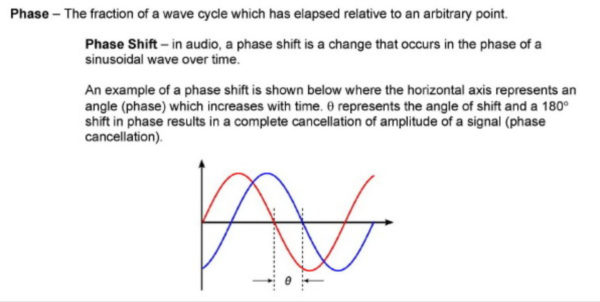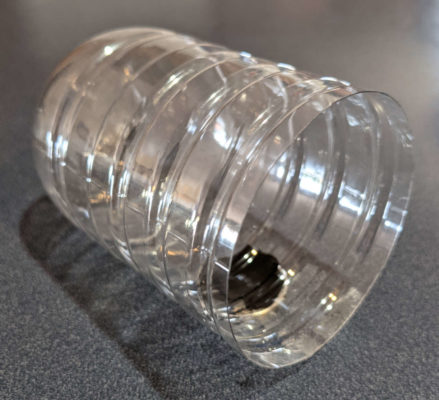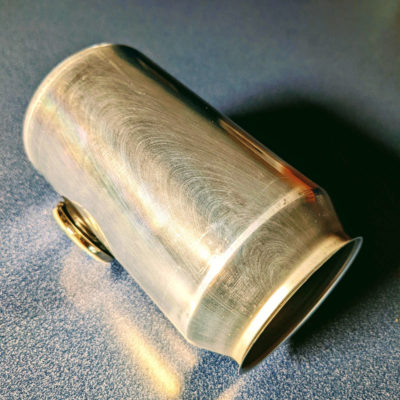What is the problem with B Flat 3 & B Flat 4 and Handpans?
Why are they difficult notes to tune?
Why are they avoided by builders?
Can they be fixed? Good news!! Yes!!! They can be fixed in many situations! 😉
Problematic Bb3 and Bb4
These two notes have haunted and taunted handpan builders since the very first 53cm and 21″ diameter handpans were first built. While many players don’t notice the issue when first playing a handpan, it can become more obvious over time. Once one hears it, rarely does one not hear it. Overwhelmingly most builders don’t worry about Bb3 as it is relatively subtle. The majority of players don’t care while others are driven crazy by it. Most builders also avoid Bb4 like a plague however because it is especially problematic and obvious to everyone. The note just sounds dirty, wobbly and strange. Classic fixes for Bb3 were to simple put a cloth inside the instrument. While it helps some, this is basically because it is muffling the frequencies.
The problem is wave interference or phase shift. Some people have also called it impedance.
What does that mean exactly?
Sound is created by waves of vibration and each note has a different wave length. In the handpan, these waves are also bouncing around the chamber. If a wave has just the right length so that it leaves a note membrane, then bounces off the other shell, bounces around the corner of the rim in just the right way and then bounces back to the note but does not line up with the original waves, it may clash with original waves still coming off of the note membrane. This is what creates wave interference or wave cancelation. The waves line up in a way where they clash, or disrupt each other.

Imagine these two waves as opposing forces that are battling each other. If this happens in something like a jet turbine, it can rip the turbine apart so this force can be very powerful at high speed.
Basically what this means for the player and tuner is that the wobble of certain notes or harmonics is caused by the shape of the instrument. The only way to deal with it is to change the angle or length of wave forms inside the chamber so that the bouncing waves no longer clash. This can be done by:
- changing the position of the note on the instrument to a different location (not always possible)
- changing the size of the instrument, especially the diameter (incredibly cost and resource expensive)
- changing the wobbly note to a different note. In the case of Bb4, this would mean changing it to A4 or B4 or something else. (changes the scale)
- disrupting the bouncing of waves inside of the chamber with some sort of baffling or barrier.
Bb4 is the worst note for wave interference on a 53cm or 21″ diameter instrument.
The problem is not only Bb4 as a fundamental however. Additionally, sometimes A4 or B4 can have subtle issues because they are on the edges of the range of interference.
This is also not just a fundamental note issue. It can be a problem with harmonics, which can more subtly influence the stability of the note. A very common example on MANY handpans is when Bb4 is a harmonic. It will often have issues, especially in Bb3 as an octave harmonic. This wave interference issue can also happen on Eb3’s compound 5th, which is also a Bb4. Beyond Bb4, there are other notes that can also have more subtle issues on this same size instrument including A4, B4, B5, F#5, G#5, and C#6.
It is enough to drive a tuner crazy! It is worth having sympathy for anyone with perfect pitch that plays handpan or really any instrument as almost every acoustic instrument has issues like this.
How to Fix Handpan Impedance, Wave Interference and Phase Shift
We have been exploring how to deal with this issue since the very beginning of Saraz in 2012. Early on in the first 30 Saraz, I tried building an instrument with a Bb4 fundamental on a 21″ diameter instrument. Somehow, I got lucky. The note angle was right, the height of the instrument, the angle of the rims, and second port hole or perhaps it was the alignment of the stars and moon that lead to the note sounding perfectly fine. I often think back about the instrument and honestly wish it hadn’t been successful because it taunted me for years! Every time after that I tried it, the note failed miserably. I learned a lot in the process however. During that time, I tried a lot of different kinds of foam as internal baffles.

-Image courtesy of Magnetic Magazine
There are usually foam boards or acoustic foam on the walls and sometimes hanging from the ceiling of music studios. This is basically the exact same situation on a larger scale. Certain sound waves are bouncing around in the room in undesirable ways. The baffling disrupts them.
In handpans, really porous acoustic foam will muffle the internal bounce of the waves. While it clears up the problematic notes, it also somewhat muffles the whole instrument. Closed cell foam is much less porous. It doesn’t muffle as much, but it also doesn’t help the problem as much. Some builders have used metal baffles either under the problem note or strategically positioned in the instrument. These also help to break up the bouncing without muffling the resonance. If really well positioned, baffles can clean up the note pretty well. For perspective, it can take a tuner awhile to find the best place on each instrument and sometimes still never get it perfect. There have been many Saraz that at least an hour was spent trying to figure out where best to position 1-3 foam baffles.
In 2015, we gave up on baffles and decided that Bb4 and certain other frequencies just were not meant to be on 53cm or 21″ diameter handpans. We created 3 sizes and started building 19″, 20″ and 21″ instruments. That fixed the Bb4 problem. Now we could build Bb4 on a 19″ diameter handpan! The new problem however was that on each size, the range of wave interference simply moves to new problem notes. C5 sounds horrible on a 19″ diameter handpan. So it was still impossible to have almost any full scale without some issue somewhere. In the best diameter design, there is always one note that will sound particularly bad. We also learned that the majority of players would rather have a less than perfect note than not have the note at all, which led us to bringing back notes like Bb3.
In 2020, I decided to explore an idea that I had heard another builder try years ago. Instead of using foam or a metal plate as a baffle, I used a water bottle cut in half. Similar to this:

It worked shockingly well. I had a couple Bb3’s in 2020 with Bb4 octave harmonics that wobbled more than most. A half water bottle inside cleaned them up nicely. I was kind of on the fence about using them though. It just seemed funny gluing a plastic bottle inside a handpan. I have also noticed over the years that many players don’t hear these fine details of the instrument which leads to many builders just ignoring it. A 10 cent wobbling octave harmonic of a F#4 may never be noticed by anyone but the tuner when they see it wobbling in their tuning software. So, I decided that like the overwhelming majority of builders, I would not worry about these fine details unless either Bb3 was really wobbly or a customer was concerned about it.
In 2021, we made an instrument for a professional musician, composer, and studio producer who has an exceptional ear and also plays Bb trumpet as his primary instrument. He had another handpan with a dirty Bb3 so he was keenly aware of the issue. When we sent him the video of the instrument before shipping, he noticed some wave interference in the Bb3 and asked if anything could be done about it. We explained how yes, it can be fixed. Something really obvious also dawned on me at the time. Why not use magnets to hold the water bottle in place? This way, they can be easily moved by the tuner for a retune, otherwise they really get in the way! Rare earth neodymium magnets glued on the side of the water bottles works very well. On a side note, I learned years ago that no matter how much gorilla tape is used to tape a baffle inside, it will eventually fall off. Alternatively, glue can be very tricky to deal with inside a finished Handpan!
I found that one bottle positioned on the bottom shell half way between the port and rim with the open end facing the rim and pointing toward the Bb3 mostly cleaned up the Bb4 octave harmonic. A second bottle also on the bottom shell half way between the port and rim with the open end facing the rim, positioned 90 degrees from the first bottle cleaned it up 99%. Typically 1 baffle is enough however. Unlike foam, there is no muffling! In the following video, I fix a wobbling Bb3 on a D Minor Kurd Saraz (one of the most popular handpan scales).
I visualize that the bottles are basically trapping the bouncing waves and stopping enough of them from bouncing and canceling out the original waves coming from the note. I was so excited about it, that I decided to order more magnets and explore it further. 😉
I told Jason, our email manager, about it and he then asked me a question I had long ago abandoned:
“Can Bb4 as a fundamental also be fixed?”
This is indeed the true test! So I tried it on an instrument and amazingly, yes!!! It can also fix Bb4 as a fundamental. It took 3 bottles to fix the Bb4 as a fundamental. They are positioned all with the open side facing the rim like before. One is under the Bb4, one is directly across the instrument from it and one is at 90 degrees of those 2 bottles. In the following video, I use 3 water bottles to fix a Bb4 on an F Major Saraz:
Really? A water bottle?
For the player looking for an easy way to clean up Bb notes, we found the water bottle iss ideal. After trying a number of different water bottle brands, I found that “Le Bleu Ultra Pure 20 oz” was about perfect. The plastic is stronger than most, very light weight, has corrugated ridges and a curved bottom. I believe the shape is helping to disrupt the bouncing waves while the weight is ideal for the specific size magnet to hold it securely. The brand appears very common in the USA and usually sold in a 6 pack. I found also that even the specific length of the bottle influences the effectiveness. Too long and it starts to muffle the notes, too short and it does not stabilize the notes. Cutting the bottle on the top ridge line of the bottle seemed to be about ideal.
We also tried a few different magnets. Some were too strong while others were not strong enough to hold the internal baffle solidly in place. We finally settled on this magnet. The magnet is still weak enough to remove it for tune ups but strong enough to hold the baffle solidly in place. Note that the 2mm thick option thickness was significantly weaker than the 3mm thick and would not work.
Aluminium Cylinder handpan baffle
Although the water bottle design was very successful, I was still a bit hesitant about using a water bottle. It just continued to be strange to put it inside of a steel handpan. Perhaps it is because I think of an empty water bottle as refuse (or recycling). Or perhaps it is feels strange because it is plastic and the handpan is steel? In the initial experiments, I tried other materials like PVC but they didn’t work nearly as well due to being much heavier and simply not disrupting the waves enough. When falling asleep one night, it dawned on me to try an aluminum cylinder used for canning liquid. They are very light weight, have a beveled edge that would catch escaping sounds waves and still be small enough to fit into the port. Although they are slightly longer than the water bottle we used, the lack of ridged edges seem to balance this out. They are virtually identical in their effectiveness. These are often sold to home brewers for canning beer with a special canner that attached the lid, however the smallest package I have found contains 49 so probably not ideal for the player trying to fix their one instrument. This is what we currently use in the Saraz for unstable Bb3 and especially for Bb4.

Pros of this method
- It cleans up Bb4 as well as many other frequencies of wave interference.
- Another pro of using magnets in particular is how the baffles can be easily moved during tuning and tune ups.
- There is very little if any muffling.
Cons of this Method
- The main con I have considered so far is that rare earth magnets are strong! Shockingly strong. Magnetism will definitely knock notes out of tune over time. If you leave sheet magnets on a note for days for example, the tuning will drift. I have measured the magnetic field of these magnets to be about 3-4 inches or about 8-10 cm. This feels like a safe distance from the notes on the top shell. I am concerned to place these baffles within that same distance of a bottom note however
- The baffles bring down the range of wave interference a small amount while also cleaning the peak of the interference to a significant degree. They can also influence the note near the lower end of the wave interference peak. For example, if I am cleaning up a Bb4 octave harmonic on a Bb3 note on a D minor instrument with an A4 also, the baffles seem to slightly influence the A4 fundamental. It is very minor and something few players would notice but a tuner may notice with tuning software. A minor adjustment to the position of the baffles however seems to split the difference pretty well between fixing the Bb4 harmonic and keeping the A4 clean. I hear from other builders that in colder temperatures, the A4 will get dirtier however (as it does with or without a baffle). The baffle just increases it a little bit than it would be otherwise. On different sized instruments, the note on the lower end of the interference range will react the same way. On a Panart Hang for example, the baffle may make Bb4 a little worse while fixing B4. The same is likely true for Bb4 on 20″ instruments even though it cleans up B4. On 19″ instruments, it likely cleans up C5 but makes B4 a little dirtier. There is always more research to be done.
- Bottom notes in general can prove to be a hinderance with this method because they may be positioned where the baffles might be best positioned in the instrument in addition to the needed spacing between notes and the magnets.
For an instrument with no bottom notes however, the bottle or cylinder baffle and magnet method works surprisingly well in many situations!
Safety!!!
It is worth reiterating that rare earth magnets are strong!
- Beware of having a knife, scissors or anything sharp nearby when handling rare earth magnets. When I opened the package with scissors, they were pulled across the counter 6 cm toward the magnets very quickly! Had it been a knife with my fingers or hand in the way, I would have received a very nasty wound!
- Also taking each magnet off the stack can be difficult. One has to slide them sideways vs pulling directly off. If they snap back together and your fingers are in the way, they will definitely give you a good pinch!
- And finally, the instructions warned of cracking and shattering if the magnets are slammed into each other while snapping back together. Incredible magnetism! Regular magnets of a sufficient size might also work. I found however that 2mm thick neodymium magnets wouldn’t hold the baffle in place during shipping or shaking the instrument so I settled on 3mm thick instead as they were strong enough.
Who can use this method to fix B Flat 4 and other problem notes?
Ideally, this method would be used by the builder or tuner but can also be used by players with older instruments. It is worth noting however that the baffles can change the tuning slightly of certain frequencies because they are disrupting the wave forms. Depending on how the notes were tuned or where they have drifted, the note may be 10-15 cents out of tune with baffles instead of wobbling 10-30 cents without them.
Want a new Saraz with B Flat 4?
After years of exploring this, hours of frustration, and thousands of dollars spent developing different instrument sizes, I am very excited to explore the best method I have found yet for clearing up wave interference. I am not quite ready to offer Bb4 on every Saraz because I am concerned especially about bottom notes. If you are interested in a new Saraz with a Bb4 however, then please contact us and tell us what scale you are interested in and we will determine a good layout for it. I only need enough space for the baffles on the bottom shell. The following is a 2022 F# Major with Bb3 and Bb4, which uses internal baffles.
For everyone else, I hope this tutorial helps your handpans sound better than ever if you choose to use it!
Thanks so much! Wishing you all many blessings and endless inspiration!
-Mark







